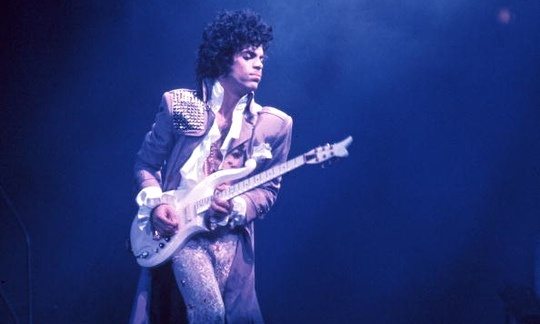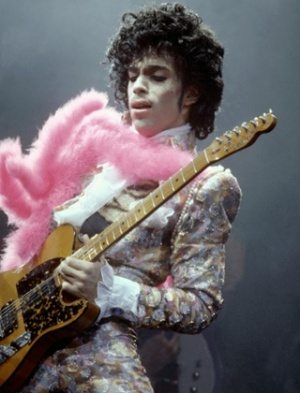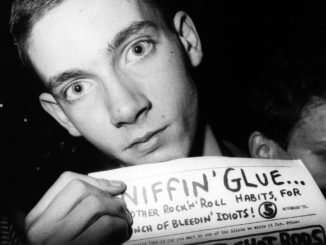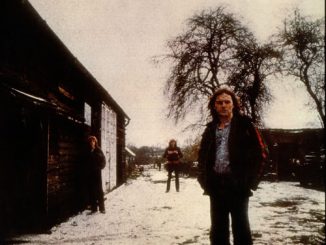The stash in the basement of Paisley Park contains a legendary collection of unreleased songs – reputedly enough material for Prince to keep releasing albums long after his death

We all know the Purple Rain, sex-god Prince; the androgynous multi-instrumentalist Prince. But then there’s the smoke-and-mirrors Prince. The one who rarely grants interviews and refuses to have his voice recorded or even allow journalists to take notes. One aspect of the tricksy Prince is his vault of unreleased material – the story goes that if Prince were to leave the world tomorrow, he has enough unreleased material to put out an album a year for a long time to come. I’ve been chasing his PR people for months to talk about these songs, before Prince’s lawyer gets in touch to tell me Prince “is the only person qualified to talk about his music”. When I suggest this the perfect opportunity for him to show us all just how qualified he is, she laughs an “it’s never going to happen” kind of laugh.
A month later, I go to Minneapolis. The lawyer has stopped returning my calls. When I get to Paisley Park, Prince’s studio, there’s a sign telling me the security fence could cause “injury or death”. It’s not looking good.
So why is this important? Why should the average “Raspberry Beret is cool” kind of listener care about Prince’s unreleased tunes? “Because he is the modern day Mozart,” says his former protege and muse Cat Glover. “We would just write, write, write and then put things to the side and fix them later. Some of his best stuff is in the vault.”
Prince may not want to talk about the vault, but there’s a whole bunch of Purple people who do.
Susan Rogers, Prince’s former sound engineer, tells me the vault predates the superstar status Prince attained with the movie Purple Rain in 1984. “I started the vault!” she says. “I joined Prince in 1983 when he was preparing to do Purple Rain. I realised it would be smart for me to get his tapes together in one place. I was aware there were a lot of pieces missing. It became an obsession. I wanted us to have everything he’d ever recorded. I called up the studios he’d been using and said: ‘Have you got any Prince tapes’? This is his legacy. We need to protect these things. It’s an actual bank vault, with a thick door. It’s in the basement of Paisley Park. When I left in 87, it was nearly full. Row after row of everything we’d done. I can’t imagine what they’ve done since then.”

The pattern of consigning songs – and sometimes entire albums – to the vault swiftly became a staple of Prince’s working method. Brent Fischer is a composer who has helped add orchestration to Prince’s work for 30 years, beginning with 1985’s Parade album; his studio heaves with reams and reams of sheet music for his work with Prince. I recognise some of the titles, but others look like songs that must be sitting in the vault – The Streets of Panama and The Fat Lady Sings. “I think over 70% of the music we’ve worked on for Prince is yet to come out,” Fischer says. “There are a lot of songs that were sent to us clearly with the idea that they would never be released. They were almost comical songs that he would work out with his horn players. There was lot of wild horn parts and experimentation with samples. I’d like to see All My Dreams come out. We enjoyed that song so much. I think it’s nine-and-a-half minutes. It’s this epic journey.”
Perhaps I’m just greedy. The official releases have come thick and fast: Prince puts out in a decade what most musicians couldn’t put out in a lifetime. Since the beginning of this century alone, Prince has released nine studio albums, seven internet-only albums, 20 singles and an EP, often thrown out into the world without fanfare or announcement. But his fans can’t help but wonder about the music they haven’t heard, the albums that never saw the light of day – Dream Factory, Camille, the triple album Crystal Ball, his Madhouse: 24 project, as well as the abandoned projects with collaborators such as Apollonia 6, Sheila Eand the Time. Most famously, The Black Album was withdrawn from release a week before it was due to hit the shops in 1987, after promotional copies had been circulated, finally getting an official release in 1994.
Bootleggers have inevitably, stepped in to fill the gap. By the end of the 1980s, hundreds of unreleased Prince songs had been compiled into unofficial albums that were sold at record fares and on market stalls around the world. But if the songs had been locked in a vault, how did they find their way to the outside world? Alan Leeds, Prince’s former manager and president of his Paisley Park label, says the leaks were likely Prince’s fault, and might even have been deliberate. “We actually organised a federal investigation but we never got it down to one source. Prince gave the combination to the vault door to way too many of the staff at Paisley, in my opinion. He was careless. I remember driving Prince to the airport and on the way back I saw there were tapes in the glove compartment, tapes under the [sun] visor, tapes in the back seat. He would ride around listening to his unreleased music and just leave things all over the place.”
Was he leaking stuff himself?
“Possibly. I know he would give tapes to friends and girlfriends. As time went on, it became clear he was more upset about the sale of bootlegs than fans hearing the music.”
Hunting for these bootlegs around the stalls at record fairs and markets used to be fun. It added to the notion that Prince’s music came from an inexhaustible purple fountain, perhaps from heaven itself. But then the internet happened. Filesharing took away the chase. Prince declared bootlegging to be theft and the vault stopped leaking.
Now the vault is closed, what will happen to the music that lives inside? Leeds recalls a conversation with Prince in the early 90s: “He said that one day he’d just burn everything.” The thought of such an act of destruction, in the minds of fans at least, may be too much to bear, but there is still cause to be optimistic about the future of the vault.
Prince has teased his fans about the music in the vault for years, even namechecking unreleased songs in his album liner notes and suggesting they will be released at a later date. In 2012, he put out a YouTube clip of guitarist Donna Grantis auditioning to be part of his band 3rdEyeGirl. The clip ended with the text: “Every good thing in the vault … coming 2013.” But of course, 2013 passed without the flood of music that was promised.
Sonny Thompson, Prince’s childhood friend and bass player at various points over the last 25 years says: “He could put out music for the next generation and it would still be relevant. I don’t think you’ll ever get to hear everything in the vault because you’d have to sit down for 10 years. There is just too much to go through.”
Prince once described his creativity as a curse; “If I didn’t make music, I’d die,” he said. Some of his closet collaborators say he plans to write a song a day for the rest of his life. So why can’t I get 365 new Prince songs every year? Everyone I spoke to – from his drummer, to his engineer, to the guy who used to design his album covers – told me Prince needs to be in control. Sure, it’s Prince’s vault. It’s his music and his story. But fans and music historians want to put together the missing pieces of the Prince puzzle. Maybe, one day, we’ll get to hear exactly what Prince has been holding back. We just need to live long enough.
Hunting for Prince’s Vault, Saturday, 10.30am, R4. An extended version of the documentary goes out on the BBC World Service on the same day at 8pm.
Eil.com has its own Prince vaults, to see a huge range of rarities, merchandise, vinyl and more, click here




Be the first to comment